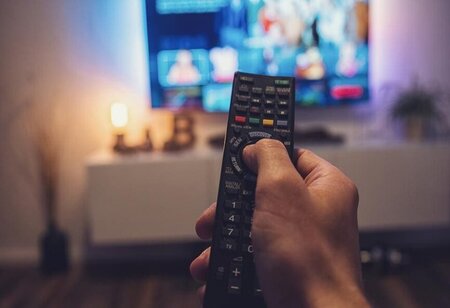As Costs Pinch, TV Broadcasters Increase Rates Despite Declining Base
To compensate for growing content costs and a sluggish advertising climate, TV broadcasters are enacting inflation-linked increases in TV channel bouquet charges. But because DD Free Dish and over-the-top (OTT) services are becoming more and more popular, there are still worries about subscriber churn.
Major broadcasters that have released new broadcast prices include Zee Entertainment Enterprises (ZEEL) and Sony Pictures Networks India (SPNI). Jio Star, another name for Star India, is anticipated to soon announce its tariff.
The base bouquet pricing for both SPNI and ZEEL have increased by more than 10%. Given its substantial position in sports and general entertainment, Jio Star is expected to execute a significant raise. The revised prices take effect in February 1.
The price of SPNI's Happy India Smart Hindi pack has increased from ₹48 to ₹54. But now, Sony Max 1, a Hindi movie channel, is also part of the bundle. In the meantime, Zee Family Pack Hindi SD, which now includes the English entertainment channel Zee Cafe, costs ₹53 instead of ₹47.
In recent years, the number of homes with pay television has decreased from 120 million to 95 million, and now there are less than 100 million. The aggregate paid active DTH base of four commercial operators—Dish TV, Airtel Digital TV, Tata Play, and Sun Direct—decreased by 2.26 million to 59.91 million as of September 2024, according to TRAI's most recent Performance Indicator Report.
Since customers have a number of options, including as YouTube, DD Free Dish, and premium OTT services, which are becoming more and more popular across a range of consumer demographics, distribution platform operators (DPOs) are worried that yearly price increases by broadcasters would make their workload even more onerous.
In spite of concerns about the declining pay-TV market, TV broadcasters contend that they are forced to raise bouquet fees. They note that slower increase in advertising expenditure (AdEx) and a shift in advertising tactics toward digital platforms continue to put pressure on major broadcasters' advertising revenue.
According to a top TV broadcasting executive who spoke on condition of anonymity, "the pay-TV universe will continue to decline even if we don't implement the rate hike, but at least we can protect our revenue by increasing the average revenue per user (ARPU)."
Following a lengthy legal battle between the regulator and broadcasters, the Telecom Regulatory Authority of India (TRAI) amended the new tariff order (NTO), resulting in bouquet pricing increases for the third year in a row.
Speaking on condition of anonymity, a cable TV executive called the price rise a "double whammy" for DPOs, who are the ones that suffer the most from customer discontent: "Broadcaster price increases will undoubtedly result in higher churn. DPOs have so far protected customers from the full effect by maintaining a fair network capacity fee (NCF)," he continued.
The amount that customers pay DPOs to send information via their networks is known as the NCF. After keeping a commission, DPOs transfer bouquet rates from customers to broadcasters.
The recent Telecom Disputes Settlement and Appellate Tribunal (TDSAT) ruling, which denied temporary relief with regard to pay channels on DD Free Dish, is also being followed by broadcasters. According to the rule, Prasar Bharati's DD Free Dish's free channels cannot be categorized as paid channels on addressable platforms such as Tata Play and Hathway Cable.
🍪 Do you like Cookies?
We use cookies to ensure you get the best experience on our website. Read more...






